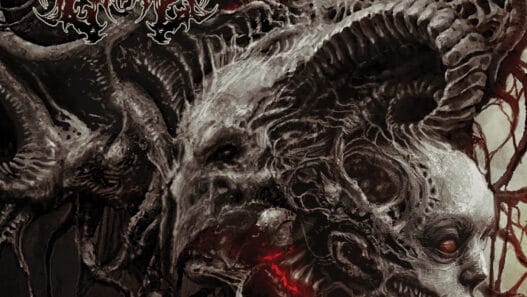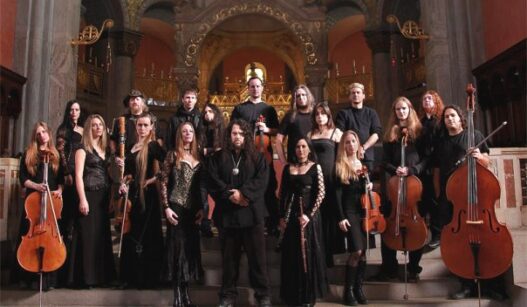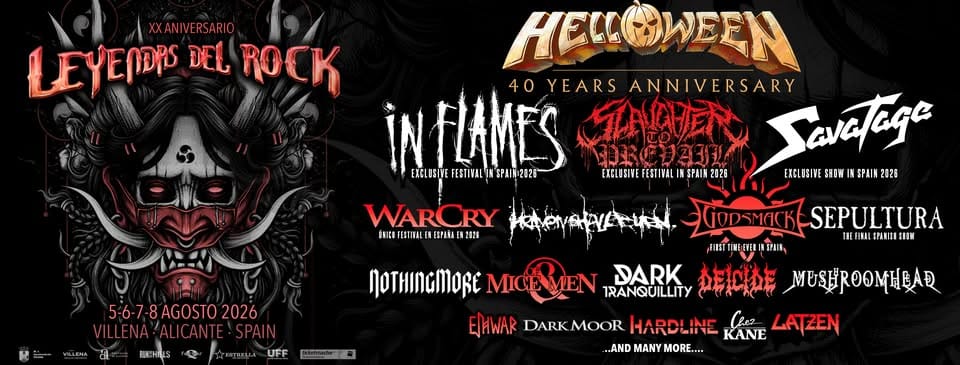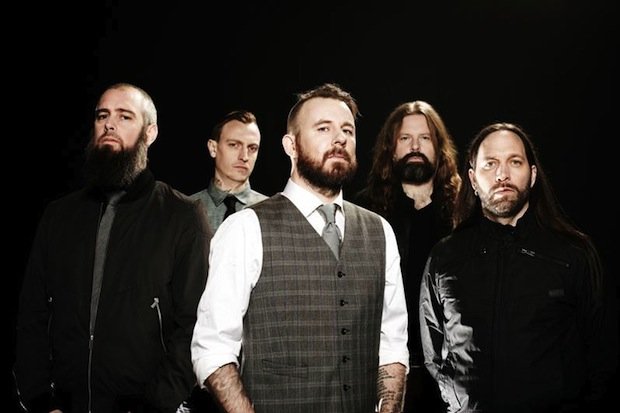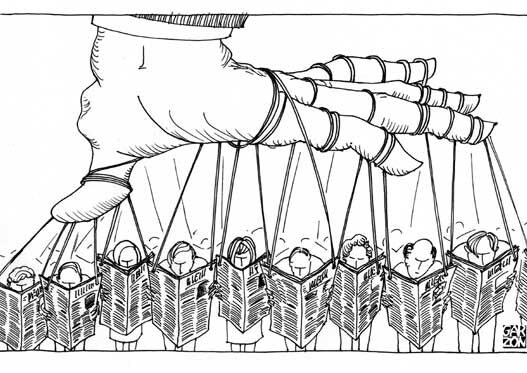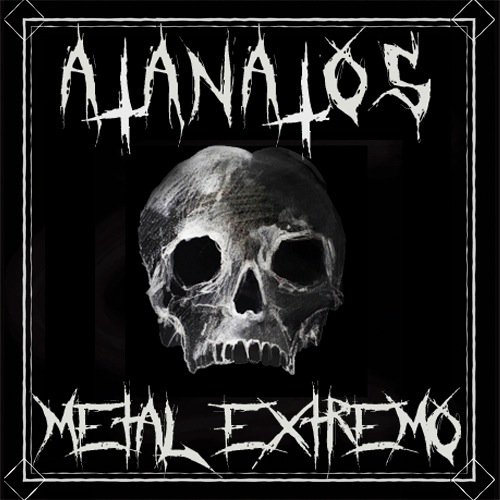(English Below)
Si me preguntas por una banda que realmente entendió el significado de la palabra «épico» y no se quedó en el simple power metal con teclado, mi respuesta siempre será la misma: Haggard. Los alemanes, liderados por el inagotable Asis Nasseri, no solo mezclaron el metal con la música clásica; destruyeron el muro entre ambos mundos y construyeron un puente de ébano sobre el abismo del tiempo. Para mí, escuchar a Haggard no es solo escuchar música; es asistir a una ópera del Renacimiento ejecutada por un ejército de metaleros.
Este no es un simple artículo. Es una carta de admiración a un proyecto que definió el metal sinfónico y neoclásico de una manera tan radical que, tristemente, no ha tenido el reconocimiento masivo que merecía.
I. De los subterráneos del Death Metal al teatro barroco
Lo que muchos olvidan, y lo que demuestra la visión de Asis Nasseri, es que Haggard nació en 1989 como una banda de death metal. Sus primeros demos, como «Introduction» (1992) y «Progressive» (1994), aún tenían ese toque crudo y extremo.
Pero, a mediados de los 90, Nasseri tuvo una epifanía. Decidió que la brutalidad del death metal sería solo un color en su paleta, no el lienzo completo. Integró una orquesta clásica. Y no hablo de sampleos de sintetizador; hablo de gente de verdad. El proyecto creció hasta tener en ocasiones más de 20 músicos en el escenario, incluyendo sopranos, chelos, oboes, violines y flautas. Esta ambición es un dato que me sigue volando la cabeza: la dificultad logística y financiera de mover una orquesta de ese calibre para tocar metal es monumental.
El resultado de esta metamorfosis fue «And Thou Shalt Trust… The Seer» (1997). Este álbum fue el manifiesto: la voz gutural de Nasseri se alternaba con la delicadeza de las sopranos, y los riffs de guitarra conversaban directamente con el violín barroco y el clavicémbalo. ¡Era una locura gloriosa!; sin duda, el mejor trabajo de Haggard hasta la fecha.
II. Las obras cumbres: Historia, ciencia y melodía
Los álbumes de Haggard no son colecciones de canciones; son conceptos históricos y filosóficos llevados a la vida con una precisión meticulosa. Es un metal para gente que ama la historia.
- «Awaking the Centuries» (2000): Muchos lo consideran su obra maestra. El álbum se centra en la vida y el tormento de Nostradamus. La música evoca la oscuridad y la mística de la Europa del siglo XVI. Lo que me fascina son los datos lingüísticos: la banda no solo canta en inglés y alemán; integran latín, italiano e incluso francés, sumergiendo al oyente en la atmósfera de la época.
- «Eppur Si Muove» (2004): Aquí, Nasseri dirigió la orquesta para rendir homenaje a la lucha de Galileo Galilei contra la Inquisición, apoyando el modelo heliocéntrico. El título, «Y sin embargo se mueve», encapsula la esencia del metal: la verdad y la persistencia contra el dogma. El nivel de detalle en la instrumentación, utilizando instrumentos de viento y cuerdas para crear tensión dramática, es un testimonio de la educación clásica de Nasseri.
- «Tales of Ithiria» (2008): Aunque temáticamente se aleja de los personajes históricos reales para crear su propio mundo de fantasía medieval (Ithiria), mantuvo la estructura sinfónica masiva y el uso de múltiples voces líricas.
III. Influencias y legado: El Metal Sinfónico después de Haggard
Las influencias que tomaron de la música barroca y neoclásica son obvias. Si uno escucha una pieza de Bach y luego una de Haggard, la conexión armónica es innegable. La banda transformó esas estructuras complejas y las hizo sonar pesadas.
Pero, ¿cuál fue su impacto en el género?
- Elevación del Metal Sinfónico: Antes de Haggard, el metal sinfónico tendía a ser dominado por el gothic metal (como primeros Therion o Nightwish) donde la orquesta era un complemento. Haggard convirtió la orquesta en un miembro igual, si no principal, de la banda. Demostraron que una banda podía ser una orquesta, y viceversa.
- Apertura a lo académico: Inspiraron a bandas a tomarse la composición clásica más en serio, fomentando una nueva generación que ya no se contentaba con simples samples de teclado. Su ejemplo demostró que el metal podía ser intelectual y brutal al mismo tiempo.
Haggard ha pasado gran parte de la última década girando intensamente y lidiando con el difícil proceso de completar su quinto álbum, «Grimm» (que lleva muchos años en desarrollo). Su ritmo de publicación ha sido lento, pero cada vez que regresan a girar, el fervor de sus fans es un recordatorio de que su música trascendió las modas.
La influencia de Haggard se basa en tres pilares fundamentales que cambiaron las reglas del juego para las bandas sinfónicas posteriores:
El uso del «Ensamble extendido» y lo acústico
Haggard rompió con el modelo tradicional del metal sinfónico (guitarra, bajo, batería, teclado/voz femenina) al incorporar instrumentos clásicos reales y acústicos como el violín, el chelo, el oboe y el clavicémbalo. Demostraron a los productores que era viable, aunque costoso, tratar a la orquesta como una sección rítmica y melódica al mismo nivel que las guitarras. Esto fue una luz verde para que bandas posteriores se atrevieran a contratar orquestas completas o a incorporar músicos académicos en sus alineaciones.
La maestría del concepto histórico
Haggard elevó el estándar temático. Al centrarse en figuras como Nostradamus («Awaking the Centuries») y Galileo Galilei («Eppur Si Muove»), le dieron al metal una legitimidad académica y una profundidad narrativa que era novedosa. Esto animó a bandas de metal extremo (especialmente Death y Black Metal sinfónico) a moverse más allá de la mitología nórdica o la fantasía genérica, incursionando en la historia real, la filosofía y el esoterismo, dándole a su música un peso intelectual. Fleshgod Apocalypse y Septicflesh son ejemplos de cómo la densidad musical se utiliza para representar conceptos intelectualmente densos.
El equilibrio de las voces (El contraste operístico)
La técnica de Asis Nasseri de alternar su voz gutural y brutal con el canto lírico de varias sopranos y tenores fue una declaración poderosa. Haggard popularizó el concepto de la «Bella y la Bestia» llevado a su máxima expresión operística. No solo era el contraste entre voz femenina y voz gutural (algo ya hecho), sino el uso de un coro lírico masivo que hacía que las voces limpias sonaran a ópera real, y no solo a una voz melódica. Esto influyó fuertemente en el desarrollo vocal de bandas como Epica y las que abrazaron el metalsinfónico más puro.
Para mí, Haggard es un logro artístico insuperable. Son la prueba de que en el metal, con suficiente visión y ambición, se puede crear algo que desafía la clasificación y que nos transporta, de forma genuina, a otra época. No hay otra banda en el metal que suene así. Y por eso, mi sombrero está perpetuamente quitado ante ellos.
If you ask me about a band that truly understood the meaning of the word «epic» and didn’t just stop at simple keyboard power metal, my answer will always be the same: Haggard. The Germans, led by the inexhaustible Asis Nasseri, not only mixed metal with classical music; they destroyed the wall between both worlds and built an ebony bridge over the abyss of time. For me, listening to Haggard is not just listening to music; it is attending a Renaissance opera performed by an army of metalheads.
This is not a simple article. It is a letter of admiration to a project that defined symphonic and neoclassical metal in such a radical way that, sadly, it has not had the massive recognition it deserved.
I. From the Death Metal underground to the baroque theater
What many forget, and what demonstrates the vision of Asis Nasseri, is that Haggard was born in 1989 as a death metal band. Their first demos, such as «Introduction« (1992) and «Progressive» (1994), still had that raw, extreme touch.
But, in the mid-90s, Nasseri had an epiphany. He decided that the brutality of death metal would be just one color on his palette, not the entire canvas. He integrated a classical orchestra. And I am not talking about synthesizer samples; I am talking about real people. The project grew to sometimes have more than 20 musicians on stage, including sopranos, cellos, oboes, violins, and flutes. This ambition is a fact that still blows my mind: the logistical and financial difficulty of moving an orchestra of that caliber to play metal is monumental.
The result of this metamorphosis was «And Thou Shalt Trust… The Seer» (1997). This album was the manifesto: Nasseri‘s guttural voice alternated with the delicacy of the sopranos, and the guitar riffs conversed directly with the baroque violin and the harpsichord. It was a glorious madness!; undoubtedly, Haggard’s best work to date.
II. The masterpieces: History, science, and melody
Haggard‘s albums are not collections of songs; they are historical and philosophical concepts brought to life with meticulous precision. It is metal for people who love history.
- «Awaking the Centuries» (2000): Many consider it their masterpiece. The album focuses on the life and torment of Nostradamus. The music evokes the darkness and mystique of 16th-century Europe. What fascinates me are the linguistic facts: the band not only sings in English and German; they integrate Latin, Italian, and even French, immersing the listener in the atmosphere of the time.
- «Eppur Si Muove» (2004): Here, Nasseri directed the orchestra to pay tribute to Galileo Galilei‘s struggle against the Inquisition, supporting the heliocentric model. The title, «And yet it moves» encapsulates the essence of metal: truth and persistence against dogma. The level of detail in the instrumentation, using wind and string instruments to create dramatic tension, is a testament to Nasseri‘s classical education.
- «Tales of Ithiria» (2008): Although thematically it moves away from real historical figures to create its own world of medieval fantasy (Ithiria), it maintained the massive symphonic structure and the use of multiple lyrical voices.
III. Influences and legacy: Symphonic Metal after Haggard
The influences they took from baroque and neoclassical music are obvious. If one listens to a piece by Bach and then one by Haggard, the harmonic connection is undeniable. The band transformed those complex structures and made them sound heavy.
But what was their impact on the genre?
- Elevation of Symphonic Metal: Before Haggard, symphonic metal tended to be dominated by gothic metal (like early Therion or Nightwish) where the orchestra was a complement. Haggard turned the orchestra into an equal, if not primary, member of the band. They demonstrated that a band could be an orchestra, and vice versa.
- Opening to the academic: They inspired bands to take classical composition more seriously, fostering a new generation that was no longer content with simple keyboard samples. Their example demonstrated that metal could be intellectual and brutal at the same time.
Haggard has spent much of the last decade touring intensely and dealing with the difficult process of completing their fifth album, «Grimm» (which has been in development for many years). Their release pace has been slow, but every time they return to tour, the fervor of their fans is a reminder that their music transcended trends.
Haggard‘s influence is based on three fundamental pillars that changed the rules of the game for subsequent symphonic bands:
The use of the «Extended Ensemble» and the acoustic
Haggard broke with the traditional symphonic metal model (guitar, bass, drums, keyboard/female vocals) by incorporating real and acoustic classical instruments such as the violin, cello, oboe, and harpsichord. They showed producers that it was viable, albeit expensive, to treat the orchestra as a rhythmic and melodic section on the same level as the guitars. This was a green light for subsequent bands to dare to hire complete orchestras or incorporate academic musicians into their lineups.
The mastery of the historical concept
Haggard raised the thematic standard. By focusing on figures like Nostradamus («Awaking the Centuries») and Galileo Galilei («Eppur Si Muove»), they gave metal an academic legitimacy and a narrative depth that was novel. This encouraged extreme metal bands (especially symphonic Death and Black Metal) to move beyond Nordic mythology or generic fantasy, venturing into real history, philosophy, and esotericism, giving their music intellectual weight. Fleshgod Apocalypse and Septicflesh are examples of how musical density is used to represent intellectually dense concepts.
The balance of voices (The operatic contrast)
Asis Nasseri’s technique of alternating his guttural and brutal voice with the lyrical singing of various sopranos and tenors was a powerful statement. Haggard popularized the concept of the «Beauty and the Beast» taken to its maximal operatic expression. It was not just the contrast between female voice and guttural voice (something already done), but the use of a massive lyrical choir that made the clean voices sound like real opera, and not just a melodic voice. This strongly influenced the vocal development of bands like Epica and those who embraced the purest symphonic metal.
For me, Haggard is an insurmountable artistic achievement. They are the proof that in metal, with enough vision and ambition, one can create something that defies classification and that genuinely transports us to another era. There is no other band in metal that sounds like that. And for that reason, my hat is perpetually off to them.







